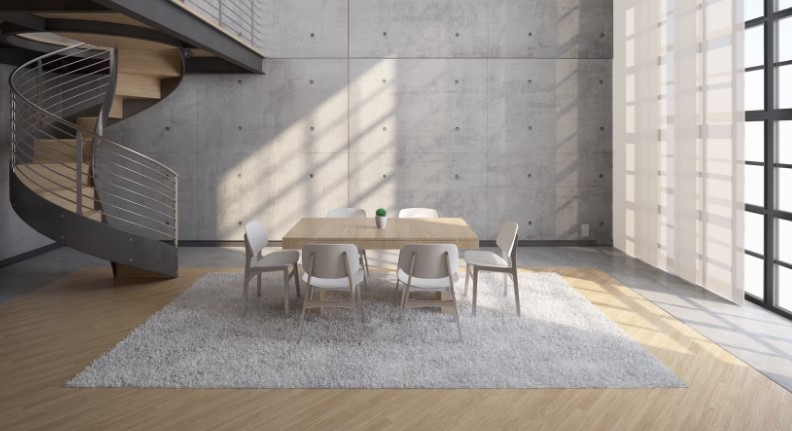Introduction: The Magic of Materialization
Imagine looking at a design on your computer screen and then, like magic, being able to touch it and hold it in your hand. This may sound like something from a fantasy book, but it’s possible! Turning designs that exist only as digital pictures into real, touchable objects is an incredible journey.
Whether you love creating things and have lots of experience or you’re just curious and want to start exploring, learning how to make your 3D ideas into something you can physically hold opens up a whole new world of possibilities. It’s like having a superpower where your drawings come to life! This guide is all about taking those steps into leaping from digital to physical, making your dreams and ideas a reality.
Whether you’re making a special gift, a model for a project, or just bringing your imagination to life, the adventure of turning what’s on your screen into something you can touch and feel is an amazing experience everyone should try.
The Foundation: Understanding 3D Rendering and Modeling
Creating a 3D model is the first step in bringing your digital dreams to life. Here’s a little breakdown of the process and some tips to get it right:
Briefing on 3D Modeling: Crafting the Digital Blueprint
Envision yourself as an artist crafting magnificent pieces, not with traditional materials like clay or marble, but through the technology of your computer. This encapsulates the essence of 3D modeling. It all starts with the flicker of a concept. Imagine something you wish to materialize, it could be a spaceship, an elaborate shoe, or perhaps a dragon.
With the aid of specialized computer software designed specifically for crafting digital models, you begin to shape your concept, akin to molding digital clay. These tools allow you to manipulate, stretch, and adjust your design until it aligns perfectly with your vision. It’s akin to engaging with the most sophisticated set of building blocks imaginable, where you assume the role of the creator, utilizing the computer as your instrument to transform imaginative concepts into tangible 3D models.
Through this enchanting procedure, ideas conceived in the mind can be visualized on the screen and even brought into the physical realm via 3D printing. How marvelous is that?
Tools of the Trade: A Quick Look at Popular 3D Renders and Modeling Software
In today’s digital age, creating stunning works of art doesn’t have to be confined to paint and paper. Thanks to amazing tools like Blender, Autodesk Maya, and SketchUp, anyone can bring their creative ideas to life right on their computer! Each of these programs is special in its way and can help artists of all skill levels, from beginners to pros. Blender is fantastic for those who want to dive into 3D art without spending a dime since it’s free. Autodesk Maya is a hit with professionals making movies and video games because of its powerful features. Meanwhile, SketchUp is super user-friendly, making it perfect for designing cool buildings or interior spaces. Whether you’re dreaming of animating your cartoon, crafting the next hit video game, or planning the layout of a dream house, these tools are here to transform your digital canvas into a masterpiece.
The Building Blocks: Understanding Vertices, Edges, and Faces
At the heart of creating anything in 3D, is picture building with blocks but in a computer. The blocks are called vertices, edges, and faces. Imagine vertices as the corners of a shape, edges as the lines that connect these corners, and faces as the flat surfaces these lines enclose. Like putting together a puzzle, every 3D model starts with these basic parts. They’re the backbone of your digital creation, whether it’s a simple box or a detailed dragon.
Understanding how these parts fit together is super important. It’s like knowing how to mix colors if you want to paint; you need this knowledge to make your ideas come to life in the digital world. So, playing and getting good at how these elements work together is your key to building cool and complex designs.
From Basic Shapes to Detailed Models: A Gradual Approach
When you start creating anything, always remember to keep it simple at first. Imagine you’re drawing or building something; in the beginning, it’s just a bunch of basic shapes like circles, squares, or lines. This is your starting point. As you spend more time with your creation, you’ll learn how each tool in your kit works and what you can do with it.
Gradually, as you get more comfortable and confident, you’ll start adding small details. These details are what eventually make your work unique and interesting. Think of it like learning to cook. At first, you start with simple recipes, but as you get better, you begin adding more spices and trying more complex dishes.
The key here is patience and practice. Start small, understand the basics, and then, little by little, build up to those intricate and fascinating models or projects you dream about. It’s all about taking one step at a time and enjoying the journey.
The Art of 3D Rendering: Bringing Models to Life
Rendering is like adding the final magic touches to a drawing or model to make it look super real or match a particular style you want. Imagine you’ve sketched a cool robot or a cozy room. At first, it’s just basic shapes and lines. Rendering is the next step where you bring it to life by adding lights, shadows, textures like metal or fabric, and special effects.
It’s like how in video games or movies, things look so real or stylish. Using rendering, you can make the sunlight look soft and warm in a room or make a car shine like it’s just been polished. It’s all about using colors, lights, and details to make your creation look just the way you picture it in your head, whether you want it to look exactly like real life or in a unique style all your own.
● Lighting and Materials: Simulating Realism
Just like in photography, lighting in 3D rendering can dramatically change the mood and realism of your model. Experiment with different lighting setups to see what best fits your project.
● Rendering Techniques: Rasterization vs. Ray Tracing
Rasterization is faster and suitable for real-time applications like video games. Ray tracing, though more resource-intensive, achieves stunning realism by simulating how light interacts with objects.
● Final Touches: Post-processing for Perfection
Post-processing involves adjusting the final image to add that extra touch of magic. Think of it as the Photoshop stage for your 3D render.
● Getting it Right: Tips for a Print-ready Render
To ensure your render is ready for physical creation, focus on getting the resolution, detail, and material considerations right from the start. This foresight saves time and frustration later on.
Choosing Your Fabrication Technique: From Idea to Object
Once your render is ready, it’s time to choose how you’ll bring it to life. Let’s explore some popular methods:
3D Printing: The Most Accessible Path
3D printing has revolutionized the way we bring digital designs into the physical realm. It’s accessible, versatile, and perfect for both novices and pros.
● Types of 3D Printing Technologies: FDM, SLA, SLS
FDM (Fused Deposition Modeling) is great for hobbyists, while SLA (Stereolithography) and SLS (Selective Laser Sintering) offer higher detail and strength, suited for professional prototypes and products.
● Materials for 3D Printing: Plastics, Resins, Metals and Beyond
The choice of material greatly affects the final product’s appearance and functionality. From flexible plastics to durable metals, there’s a vast array to choose from.
● Preparing Your Model for 3D Printing: Slicing Software and Settings
Slicing software converts your 3D model into instructions for the 3D printer. Tweaking the settings here can impact the quality and strength of your print.
CNC Machining: For the Metal Enthusiasts
CNC Machining is perfect for creating precise and durable metal parts. It’s a subtractive process, meaning it carves out your design from a solid block.
Laser Cutting and Engraving: Adding Details and Dimensions
Laser cutting and engraving offer a method to create detailed designs on various materials, perfect for decorative elements or intricate patterns.
Finishing Touches: Post-Processing and Quality Assurance
The journey doesn’t end once your object is printed or machined. Here’s how to give it a professional finish:
Cleaning and Smoothing: Techniques for a Professional Finish
Whether it’s removing support material from a 3D print or sanding down a CNC machined part, proper cleaning is crucial for a polished look.
Sanding, Polishing, and Painting 3D Printed Parts
These steps can transform your project from a rough prototype to a stunning final product. It’s all about the attention to detail.
Beyond the Basics: Advanced Techniques and Innovations
The world of digital fabrication is ever-evolving. Here’s a peek into the future:
Multi-material and Color 3D Printing: Expanding Possibilities
Modern 3D printers can handle multiple materials and colors in a single print, opening up incredible opportunities for creativity and functionality.
Integrating Digital and Physical Workflows
Using AR and VR in modeling and planning bridges the gap between digital and physical, offering a new layer of interaction and precision.
Bringing It All Together: From Render to Reality with Confidence
Congratulations! You’re now equipped with the knowledge to bring your 3D renders to life. Remember, every project is a learning experience, and the only limit is your imagination. So, dive in, experiment, and watch your digital dreams materialize before your eyes!
Frequently Asked Questions (FAQs)
Q1: What are common errors to avoid when preparing a 3D model for printing?
Watch out for non-manifold edges and ensure your model is watertight to avoid printing errors.
Q2: How can I choose between 3D printing and CNC machining for my project?
Consider the material, detail, and durability required for your project. 3D printing is versatile and suitable for complex designs, while CNC machining excels in precision and strength.
Q3: What are some cost-effective materials for beginner projects?
PLA plastic for 3D printing and MDF for CNC machining are both affordable and beginner-friendly.
Q4: How do I ensure the longevity of my 3D-printed objects?
Choose the right material for the job, and consider post-processing treatments like sealing or painting to protect against wear and tear.
Q5: What resources are available for those looking to learn more about 3D modeling and printing?
Online tutorials, forums, and community classes are great places to start. Platforms like YouTube offer countless guides on every aspect of 3D modeling and printing.




